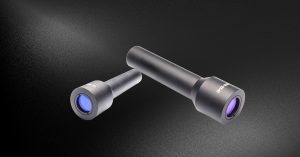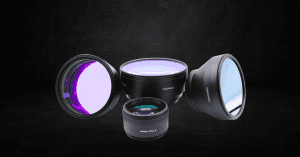Key Takeaways
- Laser beam expanders are critical in scientific and industrial applications, enhancing beam characteristics like convergence and directionality.
- They come in two main types: Galilean and Keplerian. Galilean expanders are compact, suitable for high-power lasers due to the absence of internal convergence points, while Keplerian expanders offer higher magnification but can generate heat.
- Key design considerations include lens material, coating durability, and system integration. Advanced models like zoom and achromatic expanders provide variable magnification and minimized aberration for precise applications.
Introduction to Laser Beam Expander Lenses
Laser beam expanding lens is a common laser device used in scientific experiments, laser ranging, laser printing, and other applications. The laser beam expanding lens can be realized in different forms, such as off-axis reflection, using a couple of prisms to expand the beam, and so on. The most common type of beam expander is refraction, Light is refracted and transmitted through the lens and the beam is expanded when it exits. It is essentially an upside-down telescope, usually of relatively simple construction.
Function and Applications
As the name suggests, the function of the laser beam expanding lens is to expand the beam, that is, to enlarge the laser spot area to achieve a larger area of beam output to suit different system requirements. For example, reducing the power density can prevent damage to the optical device. During beam expansion, the beam energy is adjusted, and a flat-top light output can be achieved. Additionally, laser beam expanders serve two critical purposes:
- Improve the Convergence Effect of the Beam: Laser beam expanders are often used in conjunction with beam convergence systems. The beams are expanded before converging to achieve better convergence. For a beam convergence system, such as a microscopic objective lens or an F-theta lens, the convergence effect is determined by the lens parameters and system aberration. If system aberration is small, the diffraction-limited resolution of the lens is given by 0.61λ/NA. Therefore, increasing the input beam diameter using the laser beam extender improves the resolution by increasing the NA value.
- Compress the Divergence Angle of the Gaussian Beam: A key characteristic of a laser is that its beam’s cross-section amplitude distribution follows a Gaussian function, hence called a Gaussian beam. Gaussian beams are not completely collimated and exhibit some divergence. The divergence angle of the Gaussian beam is related to the diameter of the beam waist, expressed as ω0 = λ/πθ, where ω0 is the beam waist diameter. This relationship shows that a larger waist diameter results in a smaller divergence angle. Utilizing this property, the divergence angle of the Gaussian beam can be compressed, thereby improving the beam’s directionality.
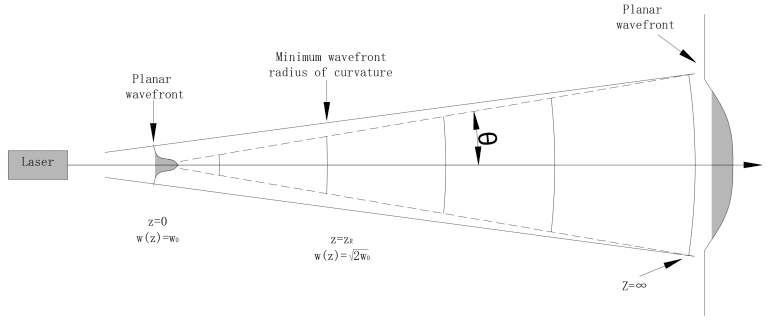
Types of Refracting Laser Beam Expanders
Galilean and Kepler-type laser beam expander
Common lens refraction beam extenders typically consist of two or more lenses, divided into Galilean and Keplerian types. These beam expanders function like Galilean and Keplerian expander used in reverse.
Galilean beam expander:
The Galilean expander features a convex lens and a concave lens as the eyepiece, with the distance between them being the sum of their focal lengths. Similarly, a Galilean beam expander consists of a negative focal length lens and a positive focal length lens. Magnification is the ratio of the focal lengths of the positive lens to the negative lens. Galilean designs are compact, making them conducive to system integration and suitable for high-power lasers due to the absence of internal laser convergence points that can cause heat buildup and aberration.
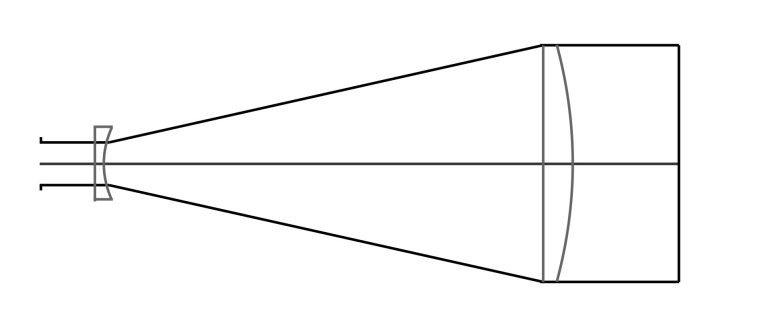
Keplerian beam expander:
Unlike the Galilean beam expander, the Keplerian beam expander uses positive focal length lenses for both the front and back sets. The light beam converges between the two lens sets, with the convergence point at the focal plane of the lenses. Keplerian beam expanders are easier to achieve a larger amplification effect but can generate heat at the laser convergence point, affecting the wavefront and increasing aberration. Thus, for high-power lasers, Galilean beam expanders are usually preferred.
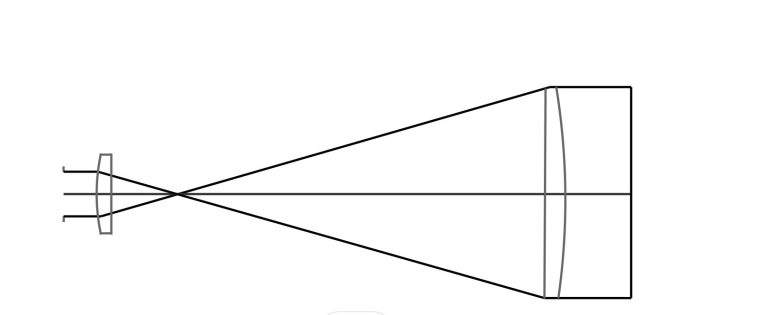
Both Keplerian beam expanders and Galilean beam expanders can serve as beam expanders. The Keplerian beam expander easily achieves a larger amplification effect, but its disadvantage is the laser convergence point in the middle of the lens. For strong laser energy, the convergence point generates heat, which affects the wavefront and increases aberration. For more energetic lasers, the Galilean beam expander is usually used. Additionally, a Galilean beam expander has a negative focal length and a relatively compact structure, which is more conducive to system integration.
Since the beam expander is usually used with a laser, the design also needs to consider the choice of lens material, the laser damage threshold of the coating film, etc. In addition to the above simple structure of the beam expander, there are zoom beam expander , achromatic beam expander, etc. derived from this basis, the structure is relatively more complex.
Design Considerations
- Lens Material: The lens material should be selected based on the laser wavelength and application requirements to ensure optimal performance.
- Coating: The coating must have a high laser damage threshold to withstand high-energy lasers, ensuring durability and efficiency.
- System Integration: Compact designs like the Galilean beam expander are preferred for ease of integration into existing systems. The fixed magnification aspect ensures consistent performance without needing any adjustments.
- Focused Spot Size: By increasing the input beam diameter, beam expanders can improve the focused spot size, resulting in more precise applications such as laser cutting and medical procedures.
Advanced Designs
Besides simple beam expanders, more complex designs like zoom beam expanders and achromatic beam expanders are available. These advanced expanders offer functionalities such as variable magnification and minimized chromatic aberration, which cater to specific requirements.
Conclusion
Laser beam expanders play a crucial role in various optical systems by enhancing beam characteristics such as convergence and directionality. The choice between Galilean and Kepler-type expanders depends on the specific application requirements, particularly the energy levels involved and the desired magnification. Proper design and material selection ensure optimal performance and integration into broader optical systems.By increasing the input beam diameter, improving focused spot size, and managing beam divergence, beam expanders significantly enhance the overall effectiveness of laser systems.
By understanding these components and their interactions, one can effectively use laser beam expanders to optimize performance in applications ranging from scientific research to industrial processes.
GREAT ARTICLE!
Share this article to gain insights from your connections!


